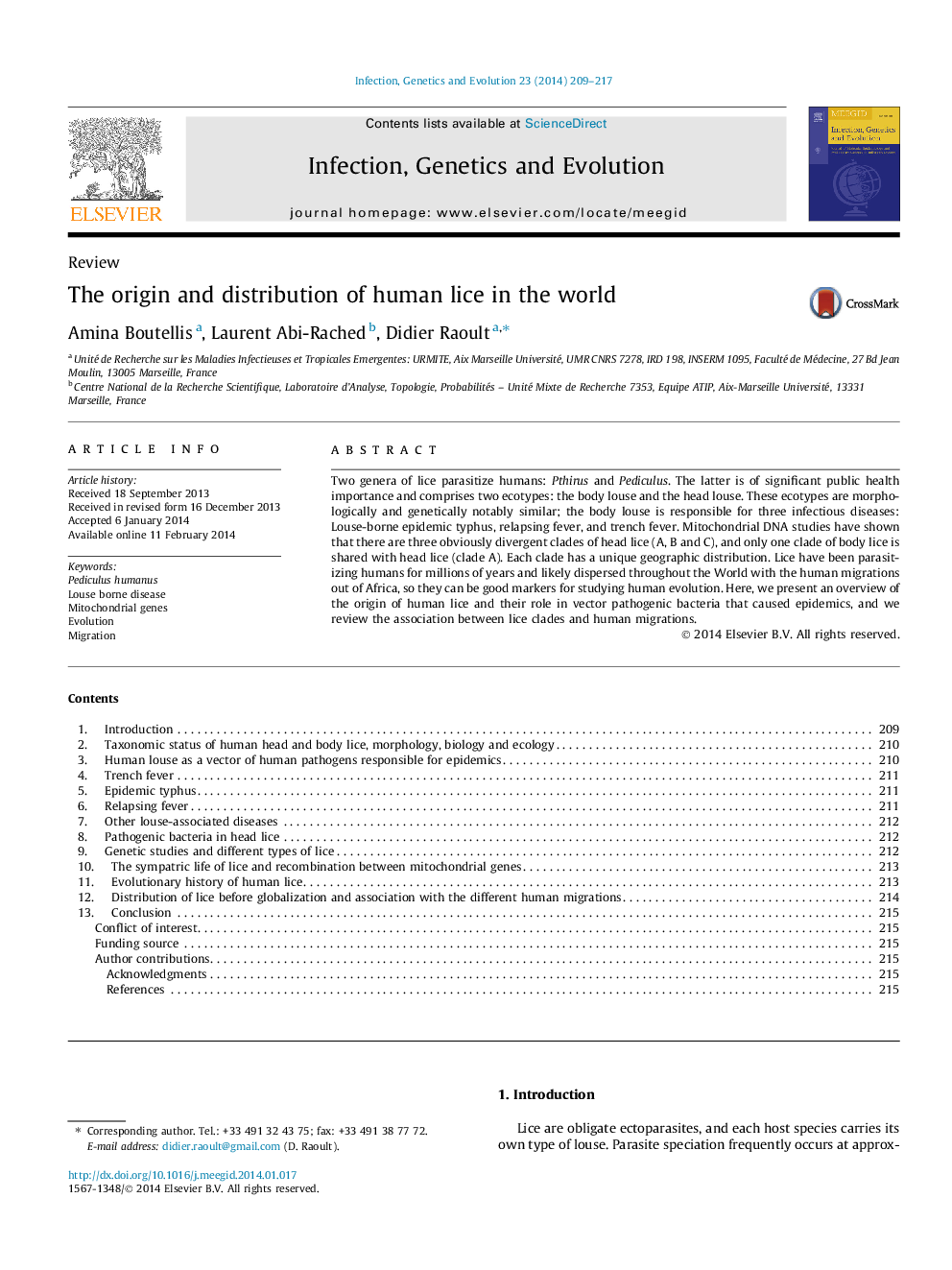| کد مقاله | کد نشریه | سال انتشار | مقاله انگلیسی | نسخه تمام متن |
|---|---|---|---|---|
| 5909884 | 1570180 | 2014 | 9 صفحه PDF | دانلود رایگان |
عنوان انگلیسی مقاله ISI
The origin and distribution of human lice in the world
ترجمه فارسی عنوان
منشاء و توزیع درختان انسانی در جهان
دانلود مقاله + سفارش ترجمه
دانلود مقاله ISI انگلیسی
رایگان برای ایرانیان
کلمات کلیدی
موضوعات مرتبط
علوم زیستی و بیوفناوری
علوم کشاورزی و بیولوژیک
بوم شناسی، تکامل، رفتار و سامانه شناسی
چکیده انگلیسی
Two genera of lice parasitize humans: Pthirus and Pediculus. The latter is of significant public health importance and comprises two ecotypes: the body louse and the head louse. These ecotypes are morphologically and genetically notably similar; the body louse is responsible for three infectious diseases: Louse-borne epidemic typhus, relapsing fever, and trench fever. Mitochondrial DNA studies have shown that there are three obviously divergent clades of head lice (A, B and C), and only one clade of body lice is shared with head lice (clade A). Each clade has a unique geographic distribution. Lice have been parasitizing humans for millions of years and likely dispersed throughout the World with the human migrations out of Africa, so they can be good markers for studying human evolution. Here, we present an overview of the origin of human lice and their role in vector pathogenic bacteria that caused epidemics, and we review the association between lice clades and human migrations.
ناشر
Database: Elsevier - ScienceDirect (ساینس دایرکت)
Journal: Infection, Genetics and Evolution - Volume 23, April 2014, Pages 209-217
Journal: Infection, Genetics and Evolution - Volume 23, April 2014, Pages 209-217
نویسندگان
Amina Boutellis, Laurent Abi-Rached, Didier Raoult,
